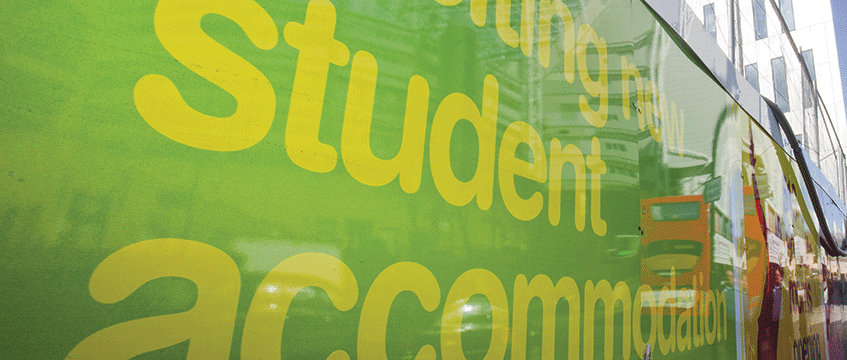The Scottish government has recently implemented legislation to make it temporarily easier for tenants of Scottish purpose-built student accommodation (PBSA) to terminate their tenancies. However, some aspects of the legislation lack clarity, which affects the ability of PBSA landlords to plan ahead for academic year 2020/21.
Background
In 2017, a new form of tenancy was introduced in Scotland, the “private residential tenancy” (PRT). The PRT gives tenants security of tenure, as well as a rolling break option. A key feature of the PRT is that it does not set a fixed end date.
Various types of tenancies are excluded from being PRTs. One such exclusion is for PBSA. This applies to “institutional providers of student accommodation”, ie landlords who let out properties in a building comprising at least 30 bedrooms which are used predominantly for housing students. Planning permission must have been granted on the basis that the building would be used predominantly for housing students. The exclusion of PBSA from the PRT regime means that PBSA landlords can use contractual tenancies to regulate student occupations. This allows them to set fixed durations without tenant break options. This is important due to the unique nature of PBSA and the need for landlords to plan the availability of accommodation in line with academic years.
Temporary changes
The Coronavirus (Scotland) (No 2) Act 2020 (the Act), which came into force on 27 May 2020, temporarily removes some of the protections enjoyed by PBSA landlords. It allows tenants of PBSA to break tenancies on either seven or 28 days’ notice for “reasons relating to coronavirus”. This phrase is not defined, but does not seem a high threshold and will presumably need to be assessed on a case-by-case basis.
The Scottish government acknowledges that the impact on PBSA landlords is likely to be significant in terms of lost income, but its priority is to protect students in an environment where many courses are no longer operating, campuses are shut and part-time work is hard to find. The changes apply until 30 September 2020, although this can be extended by the Scottish government.
The seven-day notice period applies to students who had entered into tenancies and taken occupation prior to 27 May 2020. Its main aim is to help students who have not yet been released from existing (academic year 2019/20) tenancies.
The 28-day notice period applies to students who either (a) entered into a tenancy prior to 27 May but had not taken occupation by that date, or (b) have entered into a tenancy since 27 May. The briefing paper for the Act says the 28-day period aims to “give students seeking accommodation for next academic year reassurance that, should the uncertainty about the operation of universities continue, an appropriate notice period will exist in respect of their tenancy.”
Lack of clarity
Even before the Act, there was a lack of clarity around some rules governing PBSA tenancies. One example is the rules concerning reservation fees. There is also a lack of clarity around some aspects of the Act, particularly its expiry and reach.
- Reservation fees: There is uncertainty over whether PBSA landlords can charge their tenants non-refundable reservation/booking fees (which, if allowed, might help PBSA landlords achieve greater certainty about accommodation uptake). Scottish residential landlords are generally prohibited from collecting payments which comprise “premiums” (eg reservation fees and service fees). However, there is a strong argument that the PRT legislation (when read in conjunction with earlier housing legislation) leaves contractual tenancies, such as those used by PBSA landlords, outside the scope of this prohibition.
- Expiry/reach of the Act: The Act does not expressly set out what effects its expiry will have on PBSA tenancies. For example, the Act does not expressly deal with whether the 28-day notice period can straddle expiry of the Act (we assume it can) or whether a tenancy entered into prior to the expiry of the Act can be terminated on 28 days’ notice served after the Act expires (we assume it cannot). If notice must be given before the Act expires, and if the Act is not extended beyond 30 September, the aim set out in the briefing paper for 20/21 might not be achieved.
- Agreements for lease: The Act refers only to “tenancies”, with no mention of agreements for lease. It would be consistent with the aim set out in the briefing paper if the termination right were to apply to an agreement for lease, so that a student could terminate the agreement (pre-30 September) before the tenancy itself starts. However, if the Act does not apply to agreements for lease, (a) the termination right could not be exercised until the tenancy commenced (meaning the landlord would be entitled to a minimum of 28 days’ rent, even if the student was prevented from taking occupation for a reason relating to coronavirus); and (b) if the provisions of the Act are only in force until 30 September, using an agreement for lease with an entry date post-30 September would prevent students from exercising the termination right created by the Act. It would be for the Scottish courts to determine whether a “tenancy” as defined in the Act includes agreements for lease. Previous case law tends to draw a distinction between leases and their accompanying contracts.
Of course, should the Scottish government extend the Act beyond 30 September, the debate around the use of agreements for lease, at least, would likely disappear. However, PBSA landlords would be left with longer constraints on their ability to plan their businesses for the following academic year.
Brian Hutcheson is a partner at Dentons Glasgow








